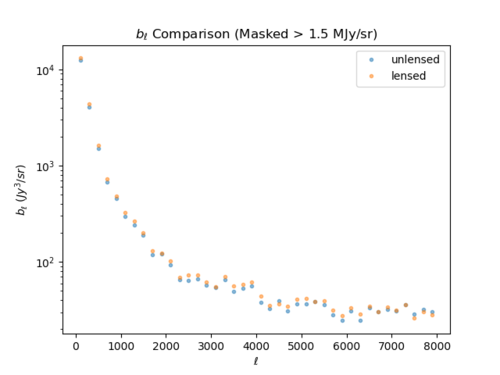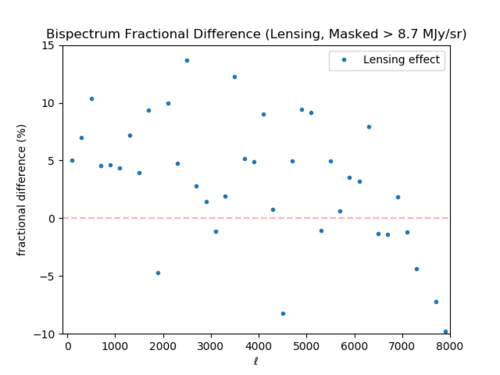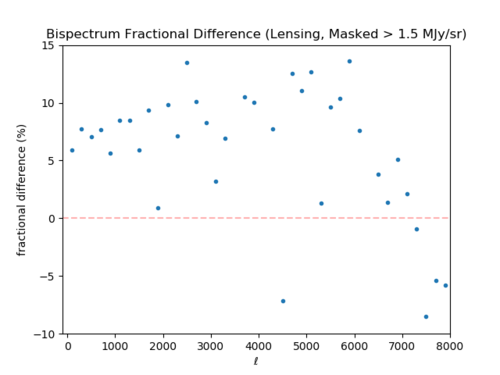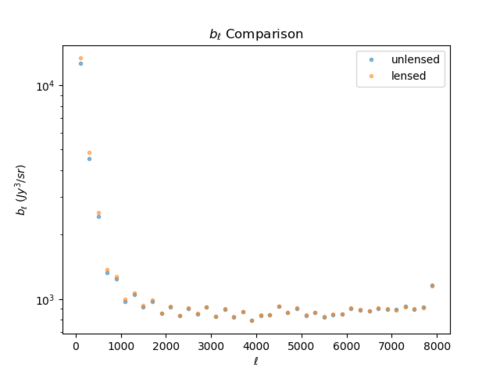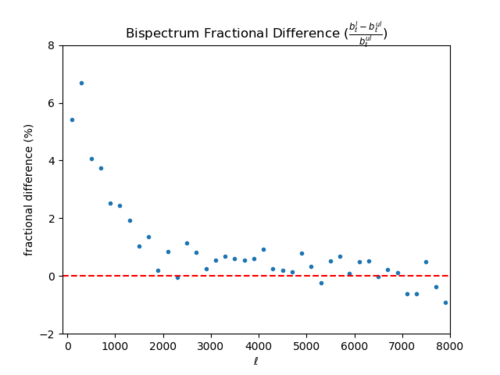Aug 13th, 2019 - CIB Lensing: Effect on the Reduced Bispectrum After Masking Brightest Pixels
Jump to navigation
Jump to search
Because the few brightest pixels in the 0th shell dominate the Poisson bispectrum, I did some flux cuts on the brightest pixels: 1. The Crawford paper (https://iopscience.iop.org/article/10.1088/0004-637X/784/2/143/pdf) states that compact sources larger than 6.6 mJy were masked for 150GHz; using the relation [math]\displaystyle{ f_{\nu} \propto \nu ^ {3+\beta} / [\exp(\frac{h \nu}{kT}) - 1] }[/math], where [math]\displaystyle{ \beta = 1.75 }[/math] and [math]\displaystyle{ T = 24.4 }[/math] (Planck XXX https://arxiv.org/pdf/1309.0382.pdf), the value at 545GHz is around 540 mJy. Dividing this by the size of a pixel for an NSIDE 4096 map yields 8.7 MJy/sr. Setting this value as the first flux cut, about 450 pixels from the 0th shell only have larger values. These pixels were set to the mean of the 0th shell (before masking). 2. As the first flux cut may not mask enough pixels, a second flux cut was done using Vieira et al 2010 (https://iopscience.iop.org/article/10.1088/0004-637X/719/1/763/pdf). As this paper mentions that 47 dust-dominated sources were found over a 87 square-degree patch of sky. As the full sky is roughly 40,000 square-degrees, the number 47 corresponds to about 20,000 sources in the full sky. So, I masked the brightest 20,000 pixels (or pixels brighter than 1.5 MJy/sr) throughout all 20 shells of the CIB (most of these are from the first 400 Mpcs).
As expected, the effect of the lensing on the bispectrum is much larger than before, averaging nearly 10% in both cases below.
Masking Pixels Brighter Than 8.7 MJy/sr
Masking Pixels Brighter Than 1.5 MJy/sr
As a comparison, the plot below shows the effect of lensing on the bispectrum including all the brightest pixels in the map.
Together with the field component, the lensing should change the bispectrum significantly.
